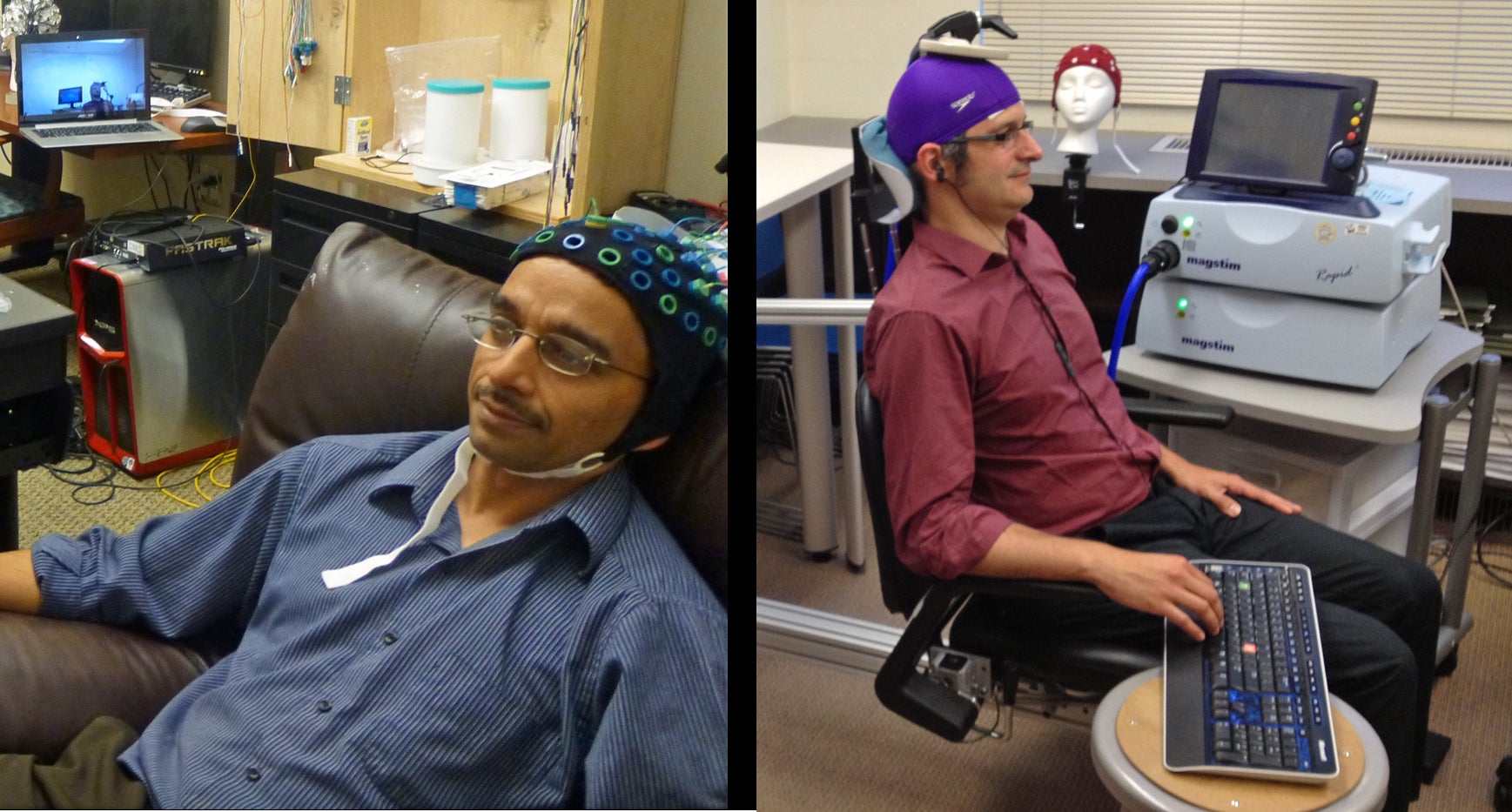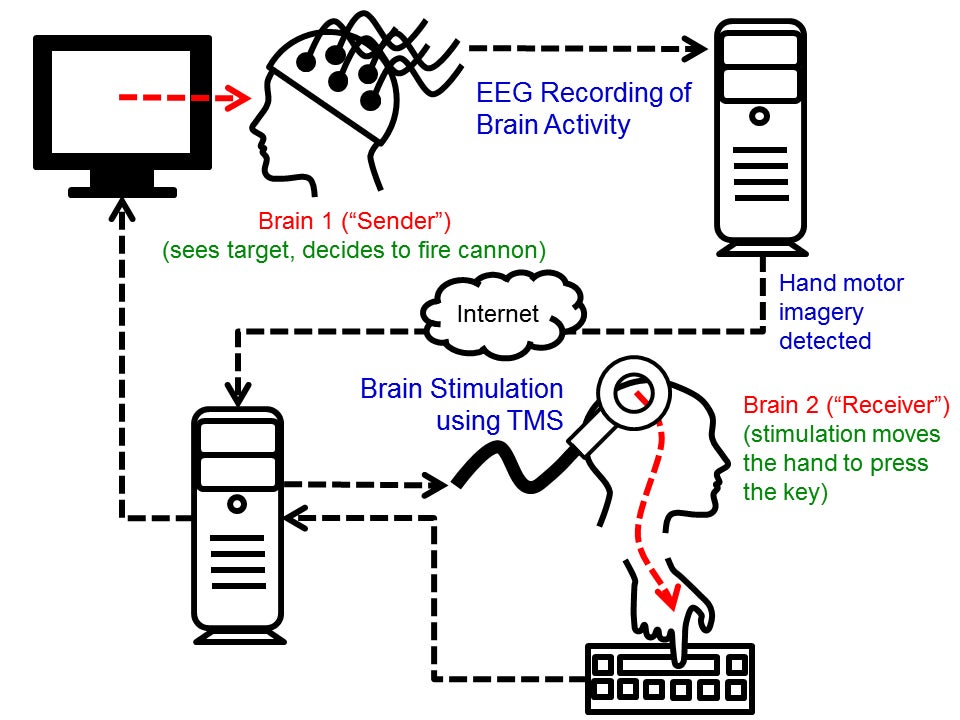Video: first ever human brain-to-brain interface successfully tested
Researchers from the University of Washington used brain signals from one individual to remotely control another person's body in real time.
For the first time researchers in the US have created what they believe to be the first ever non-invasive human brain-to-brain interface. Scientists from the University of Washington successfully sent brain signals via the internet from one individual to another, remotely controlling the recipient’s body movements.
The experiment took the form of a video game, with researcher Rajesh Rao watching a screen with a simple video game on it. The game involved shooting down enemy missiles, with Rao 'firing' the game’s cannon by imagining moving his right hand (but not actually moving it).
A second researcher, Andrea Stocco, was positioned with his hand over a keyboard hooked up to the game. When Rao imagined firing the cannon Stocco’s hand involuntarily moved, hitting the keyboard. Stocco described the feeling as being like an involuntary tic.
“It was both exciting and eerie to watch an imagined action from my brain get translated into actual action by another brain,” Rao said. “This was basically a one-way flow of information from my brain to his. The next step is having a more equitable two-way conversation directly between the two brains.”

The connection between Stocco and Rao was created using established ECG (electroencephalography) technology. This is regularly used to detect and measure brain activity by recording electrical activity.
The activity recorded in Rao’s brain was then replicated in Stocco’s using transcranial magnetic stimulation; a non-invasive way to stimulate the brain to elicit a response.
A press release from the University describes how the magnetic coils were “directly over the brain region that controls a person’s right hand. By activating these neurons, the stimulation convinced the brain that it needed to move the right hand.”
Previously brain-to-brain interfaces have been successfully conducted between rats and between rats and humans. In the latter experiment a human was hooked up to ECG equipment and a rat to a focused ultrasound (FUS) transmitter that stimulated bits of the brain without damaging it. When the ECG detected a certain sort of brain activity it sent a signal to the FUS transmitter that caused the mice to move its tail.
The scientists who conducted this human brain-to-brain experiment though are quick to stress the limitations of the technology: it doesn’t read thoughts, just simple brain signals; you might compare it to the difference between understanding the lyrics of a song, and simply registering, using a yes/no binary, whether you could hear sound at all.

“I think some people will be unnerved by this because they will overestimate the technology,” said Chantel Prat, assistant professor in psychology at the UW’s Institute for Learning & Brain Sciences, and Stocco’s wife and research partner who helped conduct the experiment. “There’s no possible way the technology that we have could be used on a person unknowingly or without their willing participation.”
The research also took place in ideal conditions in a laboratory with both participants hooked up to complex instruments and equipment.
Despite this, Stocco still outlined ambitious future users of the technology, giving the example situation of a pilot becoming incapacitated, and an attendant on the ground helping control a passenger’s movements to land the plane. Stocco also noted that brain signals are essentially a universal language; the languages spoken and understood by participants doesn’t matter.
“Brain-computer interface is something people have been talking about for a long, long time,” said Prat. “We plugged a brain into the most complex computer anyone has ever studied, and that is another brain.”
Join our commenting forum
Join thought-provoking conversations, follow other Independent readers and see their replies
Comments
Bookmark popover
Removed from bookmarks